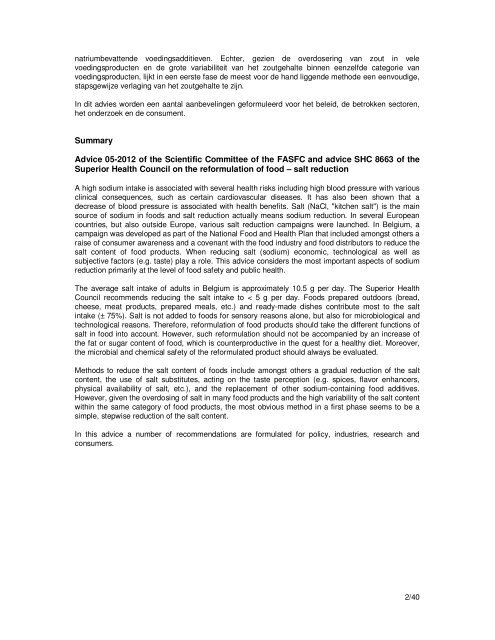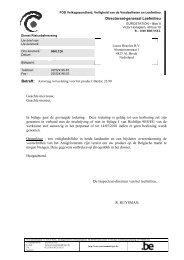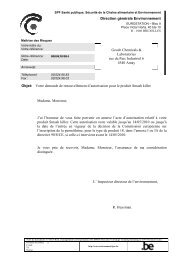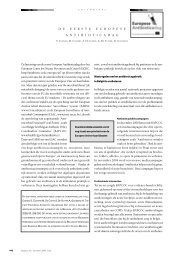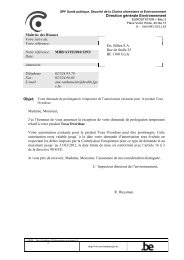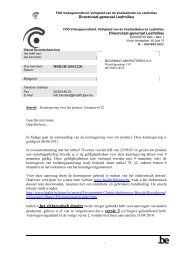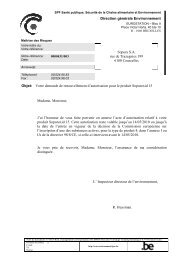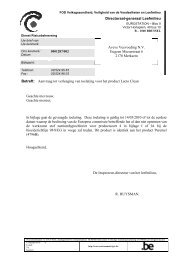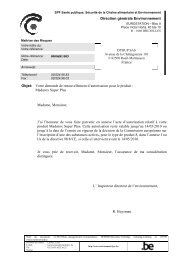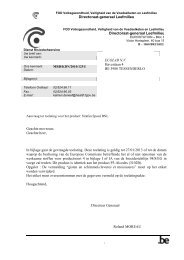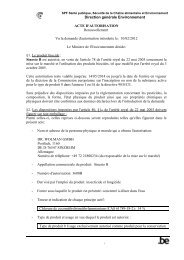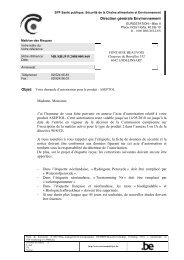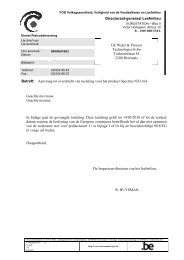Herformulering van levensmiddelen - zoutreductie - FOD ...
Herformulering van levensmiddelen - zoutreductie - FOD ...
Herformulering van levensmiddelen - zoutreductie - FOD ...
Create successful ePaper yourself
Turn your PDF publications into a flip-book with our unique Google optimized e-Paper software.
natriumbevattende voedingsadditieven. Echter, gezien de overdosering <strong>van</strong> zout in vele<br />
voedingsproducten en de grote variabiliteit <strong>van</strong> het zoutgehalte binnen eenzelfde categorie <strong>van</strong><br />
voedingsproducten, lijkt in een eerste fase de meest voor de hand liggende methode een eenvoudige,<br />
stapsgewijze verlaging <strong>van</strong> het zoutgehalte te zijn.<br />
In dit advies worden een aantal aanbevelingen geformuleerd voor het beleid, de betrokken sectoren,<br />
het onderzoek en de consument.<br />
Summary<br />
Advice 05-2012 of the Scientific Committee of the FASFC and advice SHC 8663 of the<br />
Superior Health Council on the reformulation of food – salt reduction<br />
A high sodium intake is associated with several health risks including high blood pressure with various<br />
clinical consequences, such as certain cardiovascular diseases. It has also been shown that a<br />
decrease of blood pressure is associated with health benefits. Salt (NaCl, "kitchen salt") is the main<br />
source of sodium in foods and salt reduction actually means sodium reduction. In several European<br />
countries, but also outside Europe, various salt reduction campaigns were launched. In Belgium, a<br />
campaign was developed as part of the National Food and Health Plan that included amongst others a<br />
raise of consumer awareness and a covenant with the food industry and food distributors to reduce the<br />
salt content of food products. When reducing salt (sodium) economic, technological as well as<br />
subjective factors (e.g. taste) play a role. This advice considers the most important aspects of sodium<br />
reduction primarily at the level of food safety and public health.<br />
The average salt intake of adults in Belgium is approximately 10.5 g per day. The Superior Health<br />
Council recommends reducing the salt intake to < 5 g per day. Foods prepared outdoors (bread,<br />
cheese, meat products, prepared meals, etc.) and ready-made dishes contribute most to the salt<br />
intake (± 75%). Salt is not added to foods for sensory reasons alone, but also for microbiological and<br />
technological reasons. Therefore, reformulation of food products should take the different functions of<br />
salt in food into account. However, such reformulation should not be accompanied by an increase of<br />
the fat or sugar content of food, which is counterproductive in the quest for a healthy diet. Moreover,<br />
the microbial and chemical safety of the reformulated product should always be evaluated.<br />
Methods to reduce the salt content of foods include amongst others a gradual reduction of the salt<br />
content, the use of salt substitutes, acting on the taste perception (e.g. spices, flavor enhancers,<br />
physical availability of salt, etc.), and the replacement of other sodium-containing food additives.<br />
However, given the overdosing of salt in many food products and the high variability of the salt content<br />
within the same category of food products, the most obvious method in a first phase seems to be a<br />
simple, stepwise reduction of the salt content.<br />
In this advice a number of recommendations are formulated for policy, industries, research and<br />
consumers.<br />
2/40


